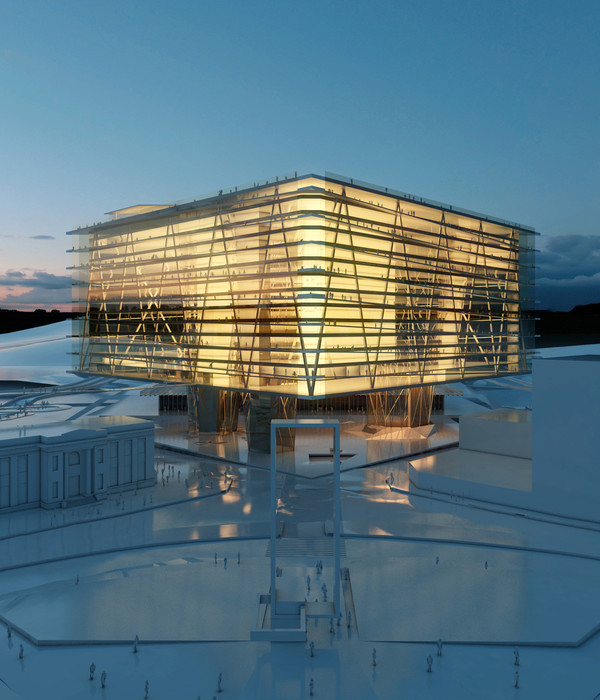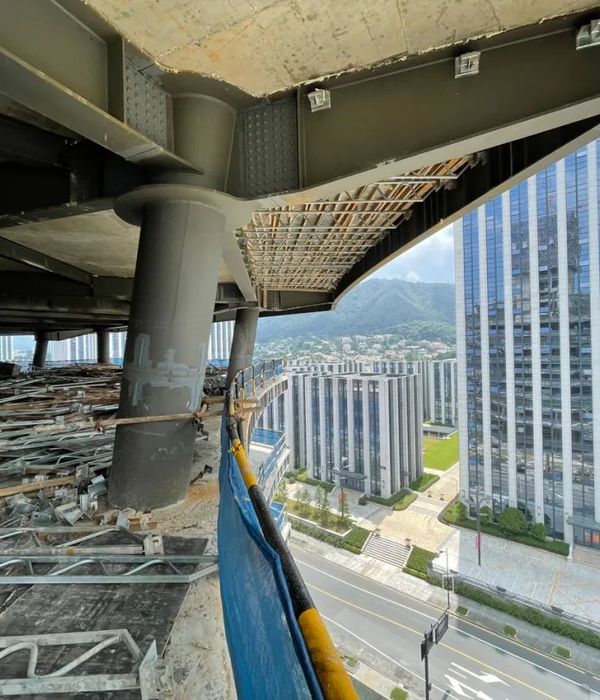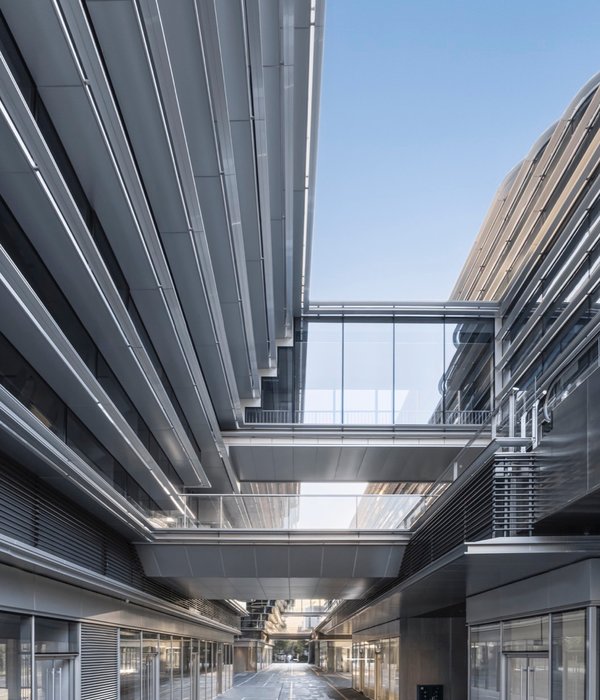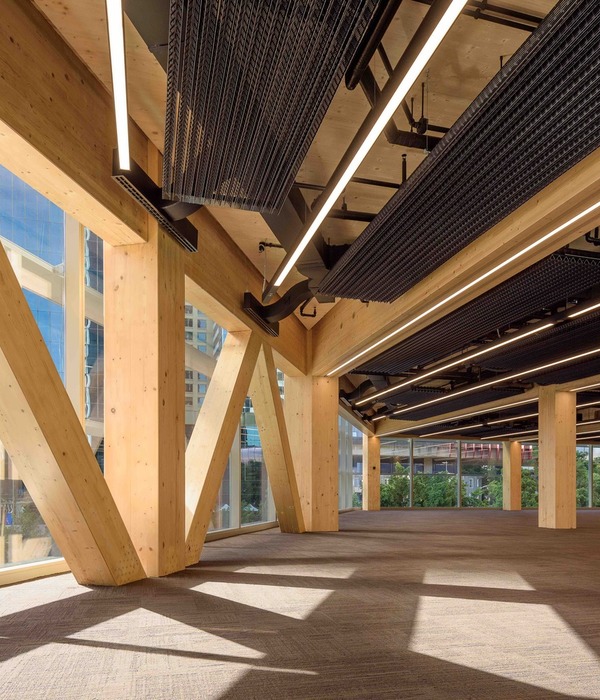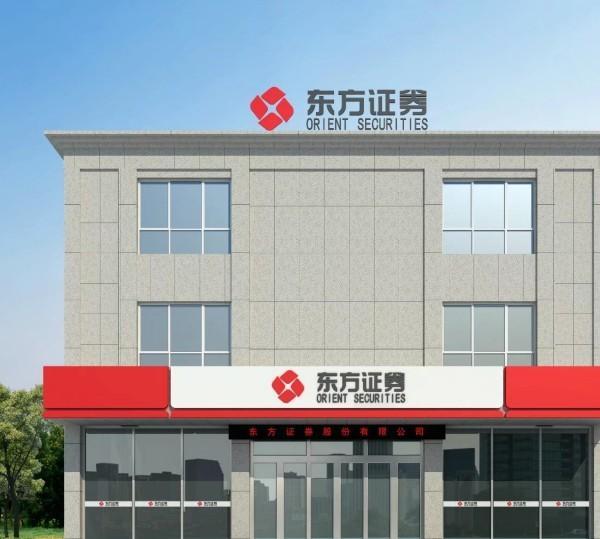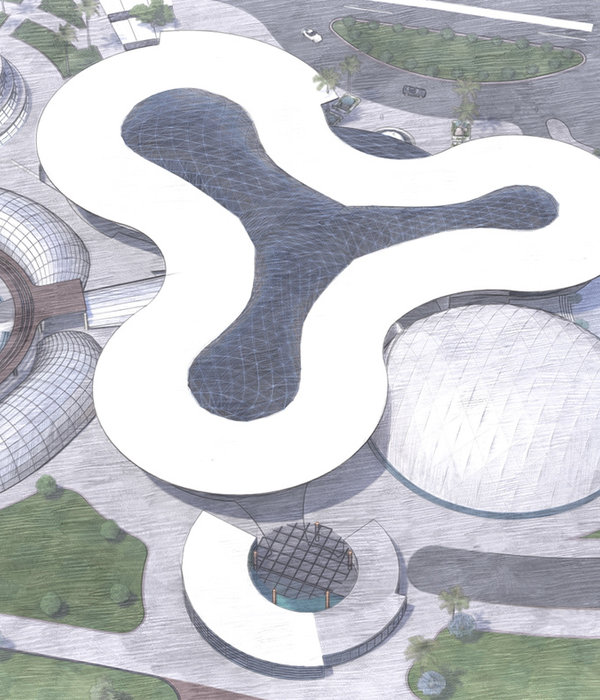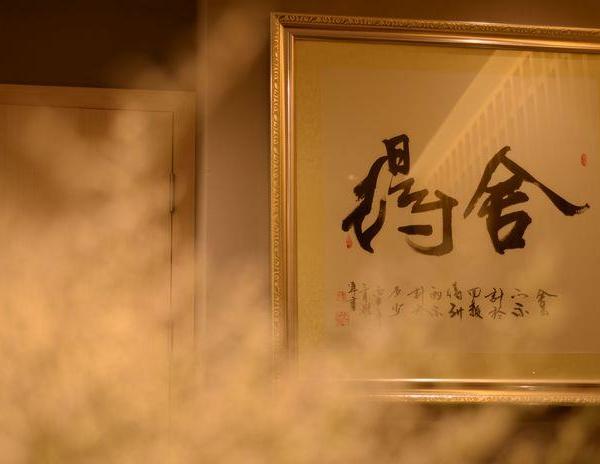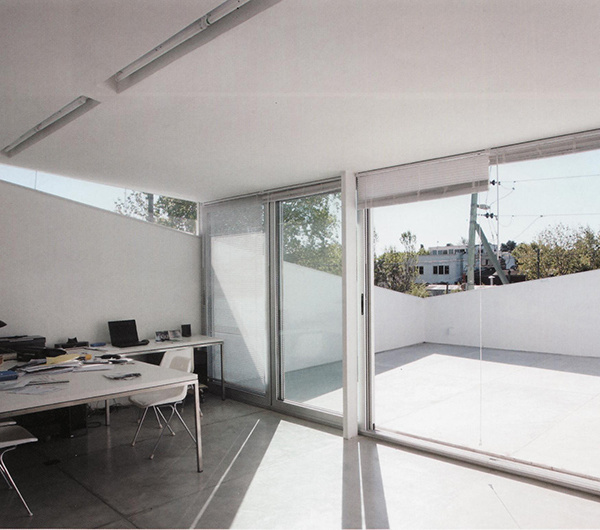From the Pont de la Fonderie, the Palais de Justice in Strasbourg shows its original appearance, both from a morphological and a historical point of view. On entering the new building, the user will have the perception of an extremely luminous space, a spectacle of light relayed by the glass facade in the perspective of the interior garden. The clarity, the transparency, the connections between the series of spaces bring peacefulness and also a certain solemnity. Two major elements give the project both functional and spatial quality: the courtyard created in the heart of the Palais, and the entirely new volume that houses all the courtrooms. A particular sequence - Salle des Pas Perdus, inner courtyard, courtroom space - is thus integrated into the building, giving it a functional and qualitative logic.
This central arrangement makes it possible to direct the public straight to the heart of the building, while ensuring the required independence for certain movements of users. Like a diaphragm between the Salle des Pas Perdus and the garden, a glass plate shelters the pathways reserved for the public. On the different floors, spaces designed like glazed galleries around a patio offer a pleasant and animated view of the interior garden, whose contemporary writing on the facades presents itself as a premise to a more general composition that unfolds on the roof.
The design of the new attic seeks to restore a balance and elegance to the perimetric coronation of the building. The volumes it produces conceive a landscape whose silhouette interacts with that of the pointed roofs of the city, the inclined walls of which reflect the colour changes in the sky. Skylights are wisely integrated into the roof to provide zenithal lighting to areas such as the courtroom, cafeteria and library. This attic, with a certain formal boldness, sets the terms of a respectful relationship between the expression of an affirmed modernity and the strict order of the facades of the historical building. Thus, the city of Strasbourg is enriched by a new urban landmark, respecting the image inscribed in the collective memory of the Neckelmann monument.
For everything to last, it must first of all change.
[ES]
El Palacio de Justicia se presenta como una arquitectura aislada dentro del contexto urbano próximo. Parece constituir una experiencia única congelada en el plano histórico. El Palacio de Justicia es por lo tanto un monumento que tiene un valor en sí mismo y por su situación, porque destaca por su expresión arquitectónica y porque constituye un referente en la estructura urbana de la Neustadt de Estrasburgo. Esta introducción quiere señalar una de las líneas-fuerza que sostiene nuestra propuesta de Rehabilitación y Reconstrucción: la expresión arquitectónica del Palacio de Justicia contribuye de manera decisiva a su integración en el imaginario colectivo de Estrasburgo, y por esta razón hemos decidido respetar literalmente las aportaciones del proyecto de Skjold Neckelmann en cuanto a su definición exterior. Las cubiertas son un elemento arquitectónico contemporáneo, independiente del volumen definido por las cuatro fachadas, que aparece sutil y discretamente en la vista próxima y muestra toda su potencia en la observación a distancia y desde una cierta altura.
El proyecto se basa en las siguientes operaciones básicas:
1. Recuperación literal de la expresión neoclásica de las cuatro fachadas del conjunto del Palacio original, y supresión de la parte superior realizada el año 1978.
La creación de un nuevo sistema de cubiertas, que alberga parte del programa y al mismo tiempo, cubre todo el edificio. La ciudad se enriquece de esta manera de un nuevo referente urbano perceptible desde la lejanía, mientras que la imagen harmónica fijada en la memoria colectiva de los ciudadanos se respeta en la visión más próxima al edificio.
2. Resolución del orden actual funcional con la introducción de un nuevo cuerpo que ocupa una parte del patio antiguo. El nuevo volumen interior contiene todas las Salas de Audiencia. Esta disposición central permite dirigir el tránsito del público directamente al centro del edificio, asegurando la independencia necesaria a los diferentes flujos de los usuarios. La organización de flujos independientes se garantiza también por la ampliación del sótano, donde se sitúan los espacios de seguridad.
3. La formación de un nuevo patio en relación con la Sala de Pasos Perdidos, que pone de manifiesto el diálogo entre la arquitectura neoclásica del edificio existente y la el lenguaje contemporáneo de la nueva intervención.
Serra-Vives-Cartagena, arquitectos
Setec bâtiment (instalaciones)
VP Cité (medio ambiente)
G.V. Enginerie (aparejadores)
Frédéric Teschner Studio (señalética)
{{item.text_origin}}

